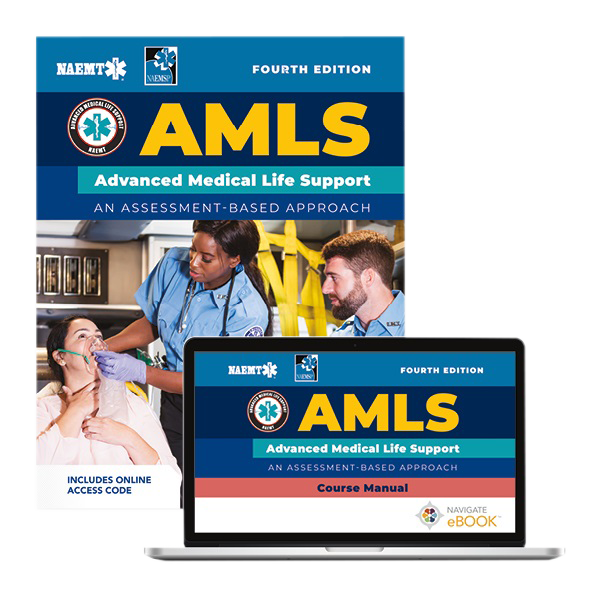Carbon Monoxide Poisoning: Teaching EMS Providers How to Track the ‘Silent Killer’

As emergency responders we frequently respond to calls that involve multiple injured patients—car wrecks, bar fights, explosions, structure collapse, house fires, shootings, to name a few. Most medical calls usually involve a single patient at a time.
Early in my training a wise instructor told me that in those rare occasions where there are multiple patients with similar medical complaints such as headache, dizziness, muscle weakness, nausea, vomiting, chest pain, or confusion, I should quickly consider what the common factor could be for each patient.
Did they all just finish running a marathon on a hot, humid day? Did they all partake in the same substance abuse at a music festival in town? Were they all on a tour bus whose last stop was a rest stop with bad food?
If they were all located in the same hotel or restaurant, confined space, or private residence, the common factor is likely the very air they are breathing.
Here are a couple of recent headlines on the “silent killer,” carbon monoxide.
- A Disaster Within a Disaster: Carbon Monoxide Poisoning Cases Are Surging in Texas – It was noted that when the Texas power grid went down during the winter storm in 2021, Harris County hospitals were slammed with over 300 carbon monoxide poisoning cases
- Minnesota Family of 7, Including 3 Children, Died of Apparent Accidental Carbon Monoxide Poisoning, Police Say
- They Were on Vacation in Mexico City. Then All Three Died of Carbon Monoxide Poisoning in an Airbnb
If you have yet to come up against the silent killer in your community, you eventually will, so let’s take a moment to review the issue as well as some tips on how to teach EMS providers the signs and symptoms.
Carbon Monoxide Poisoning Data in the U.S.
According to the Centers for Disease Control and Prevention (CDC), each year approximately 420 people die from CO poisoning (not linked to fires) and more than 100,000 visit the ED, with over 14,000 hospitalized for accidental CO poisoning.
From studying 2012-2022 data, the Consumer Product Safety Commission found that:
- Greater than 80 people die from carbon monoxide emitted from portable generators yearly.
- 45% of fatalities from engine-driven tools (EDTs) happen from November through February, 32% occur during transition months (March, April, September, and October) and 23% occur in the warmer months.
- A carbon monoxide alarm was on the premises in only 33% of all EDT-related fatalities.
Identifying a Carbon Monoxide Poisoning Incident
If I cannot see or smell or taste the poisonous gas referred to as the “silent” or “invisible” killer, how can I recognize a potential carbon monoxide poisoning?
Know that carbon monoxide comes from burning fuel. For example: gasoline, wood, charcoal, oil, kerosene, and propane, which produces fumes that include carbon monoxide.
In addition, standard household products such as vehicles, stoves, generators, lanterns, fireplaces, and furnaces produce carbon monoxide, which builds up quickly indoors if not properly vented during a fire.
Teach students to watch out for risky patients, the environment, the presenting problem and patient symptoms, and risky workers in work locations. Get students to maintain situational awareness that carbon monoxide is a threat to be alert for. Carbon monoxide monitors can be helpful, and some agencies actually have one in their first-in bag. Consider the following:
- Risky Patients – Everyone is at risk of carbon monoxide poisoning, especially infants and the elderly as well as those with chronic heart disease, anemia, or breathing problems.
- The Environment – Pay attention to locations where there are car or truck fumes, fireplaces or gas ranges, a furnace that is improperly vented, or a generator too close to the house possibly venting back into the residence. One portable generator can produce as much carbon monoxide as hundreds of mid-size cars.
- The Presenting Problem and Patient Symptoms – Are there multiple patients presenting with similar symptoms? Patient carbon monoxide poisoning symptoms can include flu-like symptoms such as headache, dizziness, muscle weakness, nausea or vomiting, chest pain, confusion, or an altered mental state.
- Risky Workers and Work Locations – According to OSHA, workers may be exposed to harmful levels of carbon monoxide in boiler rooms, in warehouses, at petroleum refineries, in pulp and paper production, in steel production, around docks, blast furnaces, or ovens. Risky occupations include welder, garage mechanic, police officer, firefighter, EMT/Paramedic, carbon-black maker, organic chemical synthesizer, metal oxide reducer, longshore worker, diesel engine operator, forklift operator, marine terminal worker, toll booth or tunnel attendant, customs inspector, and taxi or rideshare drivers.
How Does Carbon Monoxide Poisoning Harm Patients?
Carbon monoxide is harmful when breathed in because it displaces oxygen in the blood and deprives the heart, brain, and other vital organs of oxygen.
Large amounts of carbon monoxide can overcome you in minutes without warning — causing you to lose consciousness and suffocate. An essential part of oxygen transport from the lungs to the blood and on to every cell of your body is the hemoglobin on our red blood cells. Hemoglobin has receptor sites that oxygen molecules bind to. However, when carbon monoxide enters your lungs, it binds to the hemoglobin’s receptor sites more than 200 times more easily than oxygen. Technically this carboxyhemoglobin shifts the oxyhemoglobin dissociation curve to the left, which impairs the release of oxygen at the tissue and utilization of oxygen in the mitochondria (powerhouse of the cells), leading to tissue hypoxia.
In plain English: You have plenty of red blood cells with plenty of hemoglobin that is delivering the wrong gas to the cells of the body. Thus, the cells literally suffocate at the cellular level and the impact of this lack of oxygen on vital organs—such as the brain and heart—is deadly.
What Should First Responders do if they Suspect Patients are Experiencing Carbon Monoxide Poisoning?
Teach students to conduct your Primary Assessment (XABCDEs) and vital signs. If you suspect the patient is pulseless, begin CPR. If you suspect carbon monoxide poisoning, take the following actions:
- Get the patient and yourself out of the enclosed environment that contains the carbon monoxide.
- Establish and maintain the airway, inserting an advanced airway as needed.
- Administer high-flow 100% oxygen with a nonrebreather mask.
- Establish vascular access.
- Keep the patient calm and at rest to minimize oxygen demand.
- Monitor the patient’s ECG rhythm, mental status, and motor function.
- Transport to the appropriate facility. En route obtain a 12-lead ECG and assess the patient’s blood glucose level.
Carbon Monoxide Poisoning Assessment and Management Tips to Consider
- Always follow your local and regional protocols.
- If the patient was attempting suicide (for example, found in a garage with a car running), remember the patient may have other substances on board (such as alcohol or pills) before attempted carbon monoxide poisoning.
- If you have reason to suspect that the patient was in an enclosed space with exposure to fire or smoke, then evaluate for signs of inhalation injury (including facial burns, singed nasal hairs, soot in the oropharynx, nasal passages, and proximal airways), and then consider the need for early intubation.
- A pulse oximeter measures hemoglobin saturation, and its readings may be misleading if the hemoglobin is saturated with CO and not oxygen. The End-Tidal CO2 monitor is more useful, but the patient really needs an assessment of the actual CO level.
- Some regions may have access to a hyperbaric chamber. It may be appropriate to discuss this with Medical Control. Consider this: In a patient with mild symptoms, the elimination half-life of COHb is approximately 4 hours. If the patient is breathing 100% oxygen, that time can be reduced to 1.5 hours. Hyperbaric oxygen therapy at 2.5 atmospheres of pressure can further reduce that time to 15 to 20 minutes.
Safety Tips Specific to Emergency Responders
- Do not sit at the scene with the rear doors of the ambulance open, allowing CO to collect in your patient compartment!
- Firefighters should not drop their guard after a fire has been knocked down. The carbon monoxide in the air is still great during overhaul operations, so continue to use SCBA.
- Do not run the ambulance or apparatus inside your station’s garage without first attaching the appropriate exhaust ventilation system.
- Make sure the sleeping quarters have working carbon monoxide monitors and adequate ventilation.
- Assure your own safety in your department’s stations by following all the prevention tips we would expect of all employers in your community.
- Lead by example, and remember you are a resource in your community on carbon monoxide poisoning prevention!
The good news is carbon monoxide poisoning is mostly preventable with a few educational initiatives in your community.
- Have your heating system, water heater, and other gas, oil, or coal burning appliances serviced yearly by a qualified provider.
- Have your chimney and fireplace cleaned and checked yearly.
- Do not use portable flameless chemical heaters indoors.
- Have your vehicle’s exhaust system checked by a qualified mechanic yearly.
- If you have a power outage and use a portable generator, make sure it is outdoors and set up at least 20 feet from any windows, doors, and vents.
- Every home needs to have battery-operated or battery back-up CO detectors near each sleeping area and should check and replace the batteries every 6 months!
- Do not use portable camp gas stoves indoors.
- Never use your oven or stove to heat your home.
- Never burn charcoal or use a barbeque grill indoors or in your garage.
- Keep vents and flues free of debris.
- Never leave a vehicle running in an enclosed space such as a garage.
- If you suspect CO poisoning, get out of the house and call 9-1-1 right away.
Remember to keep the following key points in mind:
- Learn the symptoms of carbon monoxide poisoning and always keep the silent killer in mind as a potential problem you may be confronted with.
- Review your local and regional treatment protocols for carbon monoxide poisoning.
- Prevention is the key to saving lives from carbon monoxide poisoning.
- Share your knowledge with your friends and neighbors. They know you are an emergency responder and look to you for advice, so lead by example!
- Be careful out there and beware the silent killer!
AMLS: Advanced Medical Life Support, Fourth Edition
AMLS: Advanced Medical Life Support is the leading course for prehospital practitioners in advanced medical assessment and treatment of commonly encountered medical conditions.
Instructors: Learn MoreRelated Content:
- Addressing Bias in Prehospital Pain Management: A Call to EMS Educators
- Analysis of an Ambulance Crash: A Case Study in Why EMS Vehicle Operator Safety Should be at the Top of Your Agency’s Plans
- Are You Teaching Prehospital Blood Transfusion? This Is Why You Should Be.
About the author:
Bob Elling, MPA, Paramedic (retired) – has been a career paramedic, educator, author, and EMS advocate since 1975. He was a paramedic with the Town of Colonie EMS Department, Albany Times Union Center, and Whiteface Mountain Medical Services. He was also an Albany Medical Center Clinical Instructor assigned to the Hudson Valley Community College Paramedic Program. Bob has served as National/Regional Faculty for the AHA and involved in many successful life-saving legislative campaigns with the You’re the Cure Network. He also served as paramedic and lieutenant for New York City EMS, a paramedic program director, and associate director of New York State EMS Bureau. He has authored hundreds of articles, videos, and textbooks to prepare EMS providers for their career. Bob is the ECSI Medical Editor for the CPR and First Aid Series, Co-Author of EVOS-2, and Co-Lead Editor of Nancy Caroline’s Emergency Care in the Streets.

